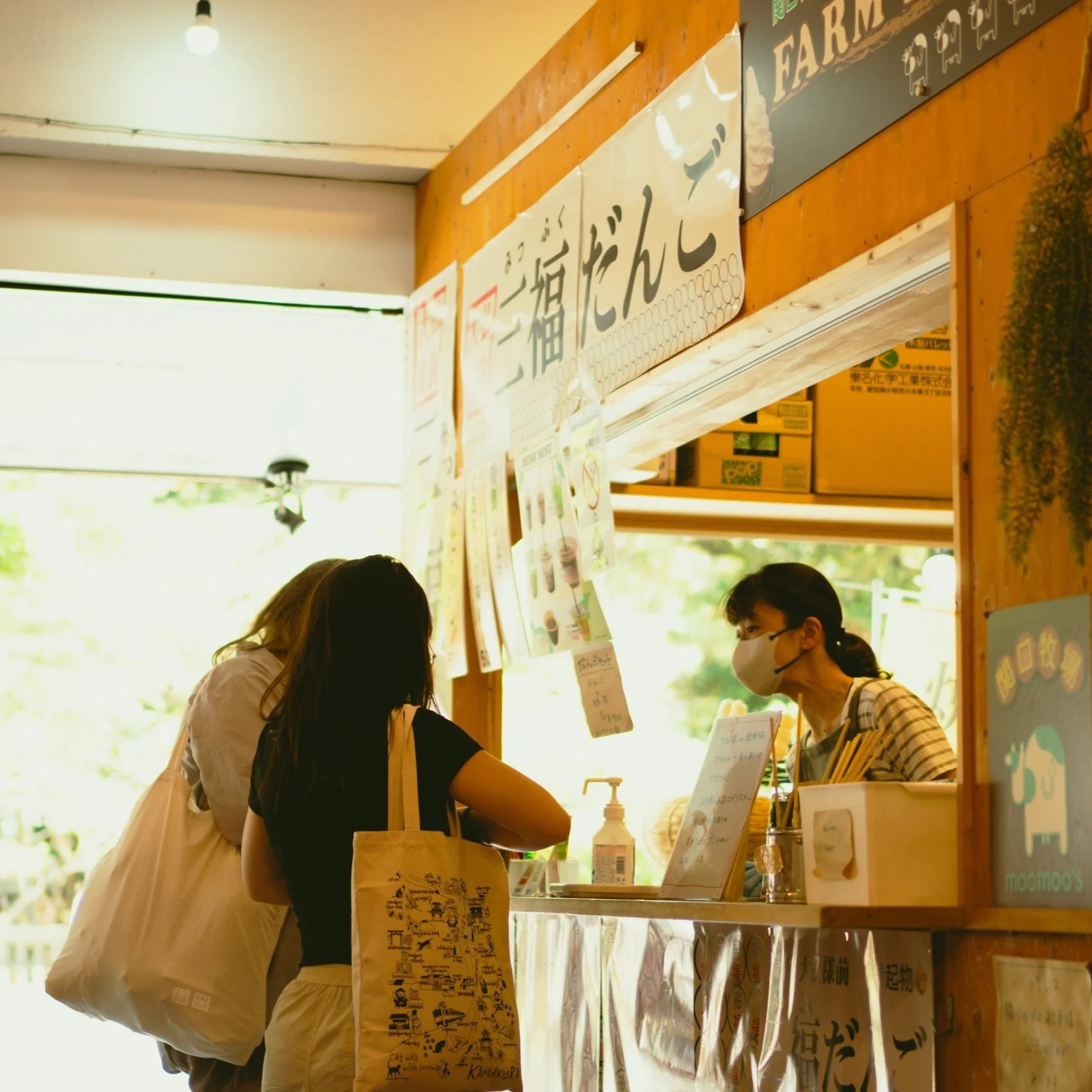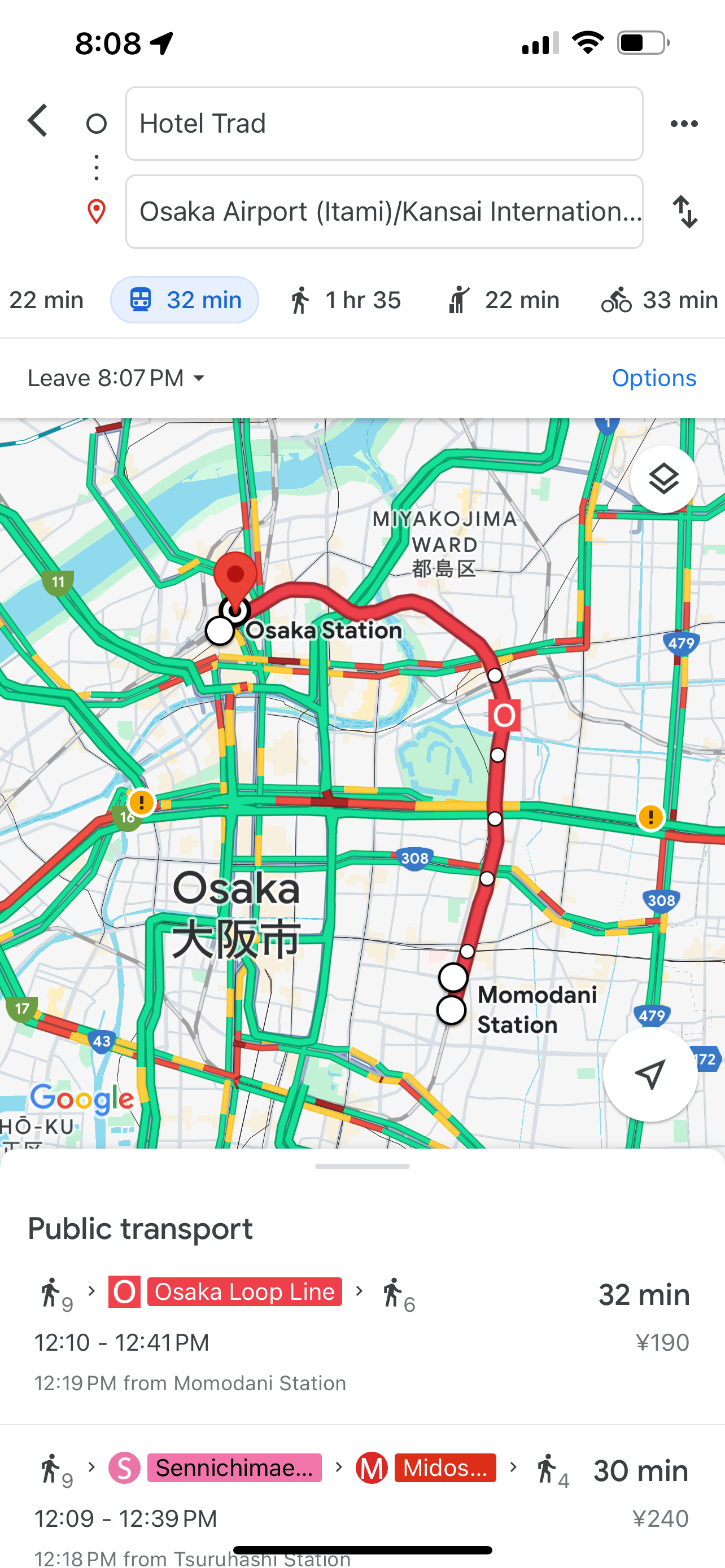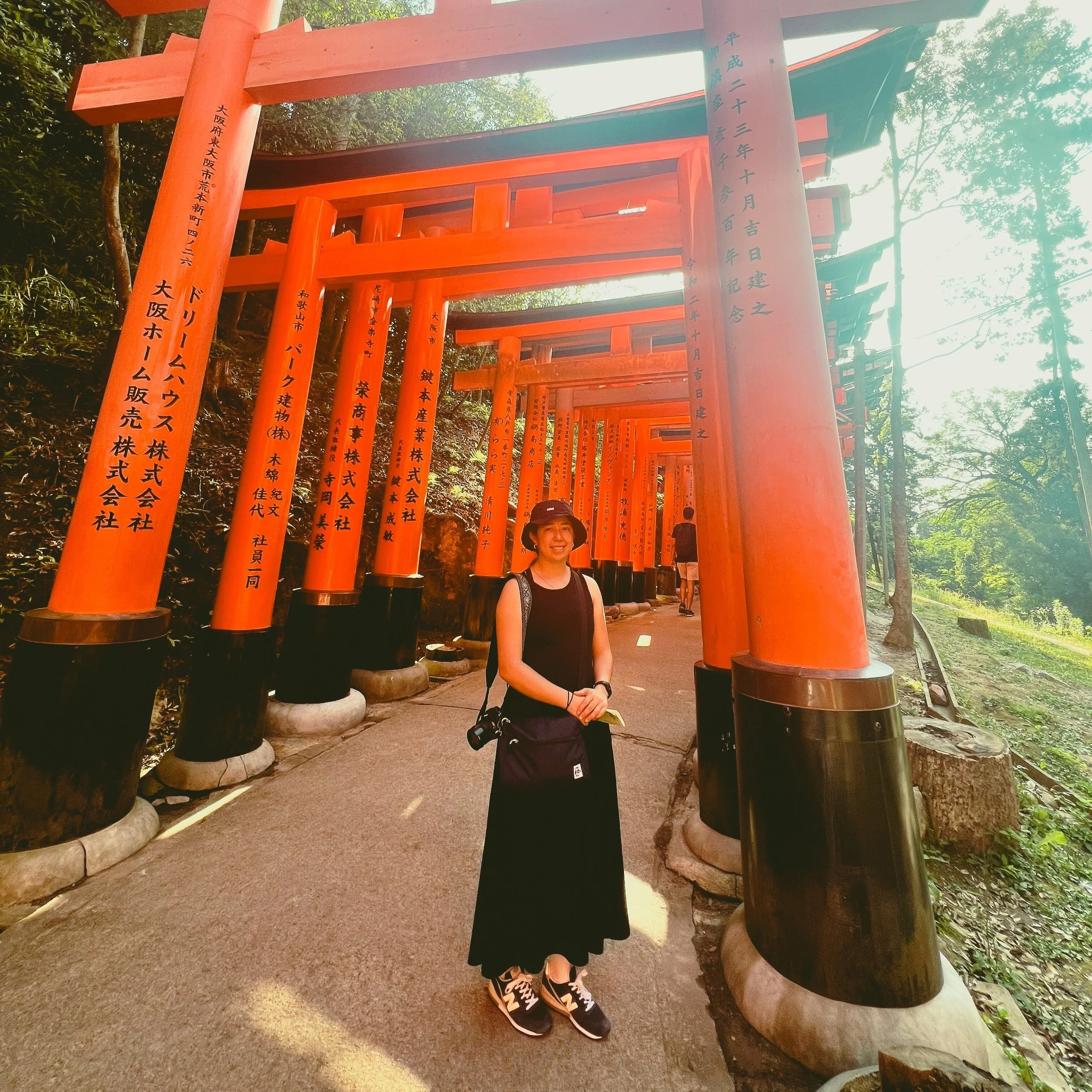1. get a Suica Card
Before you even think about visiting Japan, you’re going to want to buy a Suica card. A Suica card is a rechargeable IC card (integrated circuit card) that is the sole lifesaver to help you pay for fares on public transportation. In order to travel on the train system in Japan, you’ll need to have a rechargeable card to get around to pay the fares.
You can buy one at the airport or any of the train stations, but if you’d rather save time and trouble you can order one through Rakuten like I did and pick it up at the airport. I ordered mine through Rakuten and picked it up at Haneda Airport in Tokyo which is where I landed.
There were two options for Suica cards: the green one and the red one. I picked the red one that is catered more towards tourists and expires after 28 days, so I highly recommend this one if you’re only staying for a few weeks. You will have to put money into the card once you get to Japan and this can be done at the airpot and any of the train stations. I was in Japan for about 2 weeks and was good with depositing around 10,000 to 12,000 yen (equivalent to roughly $65-$70 USD) - my family and I used the train system extensively and I even had enough to purchase snacks/drinks at the vending machines and use the bus (the Suica card can also help you pay bus fares and purchase items at the vending machines).
Heading to Japan soon? Order your Suica card HERE!
2. Get Yen before going to Japan
While some might tell you to exchange your dollars to yen at the airport, I’m going to tell you otherwise. It might seem like the most convenient option but it is also the priciest. You can actually go to your bank and ask to exchange USD to Yen. I’m a Wells Fargo customer so I asked to exchange $3,000 USD to Yen. It takes a few days to do this so make sure you plan in advance but it cost me and my husband no extra charge to do so.
Plus coming to Japan with cash ready in hand made it convenient for me to fill up my Suica card and to buy things from the local 711 store. If you do run out or for some reason you need more, the conversion rates at their local convenience stores like Family Mart, Lawsons, and 711 are a lot cheaper than doing so at the airport. I used to work at the airport back in the day and they up-charge like crazy!
3. Learn some basic Japanese
I’ve studied Japanese for a few years at my local community college and let me just say I was glad that I did! I’m not saying you have to be completely fluent but knowing a few phrases goes a long way. Here are some phrases I recommend knowing:
Excuse me or pardon me - Sumimasen (すみません)
Good Morning - Ohayoo (おはよう)
Good Afternoon - Konnichiwa (こんにちわ)
Good Evening - Konbanwa (こんばんわ)Any time you are asking a question, you’ll usually finish the sentence with ‘Desu ka’ (ですか)
Have - Arimasu (あります)
Where - Doko (どこ)
For example, if you are asking if they have iced lattes, you can say: Aisu ratte o arimasu ka? (アイスラテをありますか。)
There are a lot of words in Japanese also that can’t be directly translated especially for more westernized vocabulary. If this is the case you can generally use Japanese syllables to somewhat sound out the word like how I did above. Instead of saying iced latte, I said ‘aisu ratte’.
If you’re asking where something is, for example if you’re looking for the restroom, you can say: Toire wa doko desu ka? (トイレわどこですか。)
Please - Onegaishimasu (おねいします)
A great way to use this is if you’re asking for something, let’s say you’re ordering food, you can say: Udon o onegaishimasu. (うどんおをおねがいします。)
I think these are a few good basics to start with! I’ll be writing another blog post about some phrases and Japanese that were really helpful for me during my travels so stay tuned!
4. Get Mobile Wifi with Ninja Wifi
I’ve heard a lot of people try to get a sim card before they head out to Japan but unless you’re staying there for a month or more, in my opinion it’s not really worth it. I ordered a mobile wifi from Ninja Wifi and it came with a power bank as well. To show you how reliable it was, I was never stranded without any data or service and I was walking all over the place (I put in over 20,000 steps and 13+ miles each day) and I never lost battery power. The mobile wifi could also provide data for up to 7 devices and the speed was amazing.
It was also decently priced at around 30,000 yen which equated to roughly $195 (this was for 12 days and for 10GB of data each day). It also cost a little bit more because I added the pocket translator (which I actually didn’t end up using lol). It was also convenient to pick up because along with picking up my Suica card at the airport, I also was able to pick up my mobile wifi at Haneda airport and actually I picked up both from the Ninja Wifi booth.
Heading to Japan soon? Order your mobile wifi HERE!
5. Use Google Maps to Navigate the Train System
The train system can definitely be intimidating. When everyone says it’s no joke…it really is…no joke. But that doesn’t mean that you can’t figure it out. Honestly, as long as you stay vigilant and aware, it starts to become pretty easy to navigate the train system.
However, to make your life somewhat easier, I highly recommend you download Google Maps on your phone if you haven’t already. I mapped out an example of one of the routes I took below. If you take a look it will show you multiple route options and it will also show you all the stops that you should arrive at on the route you pick. It even shows you the estimated cost for the fare.
Also, fear not, if you miss one train, there will be another one in a few minutes!
*Keep in mind that if you miss a route, you’ll have to refresh the Google Map app as it doesn’t update instantly.
6. Pack Light and Grab a Baggage from Japan
Keep your carry on baggage light! Luckily I brought a backpack that can compartmentalize so I was able to bring some changes of clothes along with my chargers and electronics. I did check a bag but I brought a collapsible duffle bag with a few additional items and toiletries I didn’t want to carry on just in case. Honestly, I probably could have come with even less clothing. Aside from the few changes of clothes that I brought in my backpack, I wore most of the stuff that I bought in Japan.
I ended up buying a luggage from Japan for super cheap! I bought a large luggage that cost me only $50 bucks for what would have costed me a few hundred dollars in the U.S. After that, I was able to just pack my collapsible duffle bag and use my new luggage as my checked bag for all the goodies that I brought home. Also, you won’t miss out on finding. a luggage. They have luggages in all of the train stations, shopping malls, airports, pretty much anywhere you can shop in Japan (which is almost everywhere we went).
So key takeaway is, pack light, pack the essentials, and even then you can find all of that in Japan(even the convenience stores had skin care and other toiletries)!
7. Keep Your Passport on You at All Times
Never leave your hotel without your passport in Japan. I didn’t experience it too often, but your passport will be your main source for identification. Apparently, you can be fined a hefty fee for not having it on you, so in case a police officer does decide to stop you, don’t go without it.
Also, I’ll talk about it more in the next item, but if you bring your passport with you, you can also shop for a lot of items without tax!
8. Tax Free Items
Like I said earlier, aside from avoiding a hefty fee, make sure you bring your passport with you so that you can get taxes off of your purchases! If you make a purchase of at least 5,000 yen you can get taxes off of your purchase!
However, there are a few things to note:
General items that are purchased tax free such as shoes, accessories, clothes may be used while you are in Japan.
Consumable items that are purchased tax free such as food, cosmetics, alcohol may not be consumed while you are in Japan. Generally stores will put consumable items in a tax free bag and seal it. You should not break the seal or consume it and if you do, you’ll have to pay a consumption tax with customs.
If you are going to want to use some items that are consumable, just don’t buy them tax free. For example: I bought some skin care and sunscreen that I wanted to use while I was in Japan and I did not buy them tax free so that I could use them.
Check out these resources to read up more on tax free items:
9. Carry or Buy a Coin Purse in Japan
I never thought I would have a need for a coin purse ever again until I came to Japan. There are so many shops and vending machines that will only take cash and you’ll be accumulating a ton of yen in coins!
Whether you’re purchasing a drink from the vending machine, buying food, or adding more money to your suica card for the train fare, you’ll want to keep these coins as they come in super handy. Hence why you’re going to want to keep a coin purse on hand. You can find a ton of them in Japan or you can purchase one beforehand!
Also, they can be cute! I got this cute Kiki’s Delivery Service coin purse of one of my favorite characters.
10. Bring Comfortable Walking Shoes
If you’re planning on bringing some boots or sandals, make sure they’re comfy. Honestly, keep the cute shoes at home!
If you can comfy shoes that are also cute, that’s just a plus, but with the amount of miles you’re going to be putting in, the blisters and soreness are not worth it.
I already brought a couple pairs of comfortable walking shoes, but I bought a pair of New Balance shoes in one of their locations in Ginza and these were clouds made in shoe form and definitely kept my feet alive during this whole trip.
Enjoyed this post? Share, comment, and subscribe!
Are you planning a trip to Japan soon? Check out some of these experiences that I have compiled myself and highly recommend!







![[商品価格に関しましては、リンクが作成された時点と現時点で情報が変更されている場合がございます。] [商品価格に関しましては、リンクが作成された時点と現時点で情報が変更されている場合がございます。]](https://hbb.afl.rakuten.co.jp/hgb/3e612996.6e730c87.3e612997.375f4406/?me_id=1280205&item_id=10000215&pc=https%3A%2F%2Fthumbnail.image.rakuten.co.jp%2F%400_mall%2Fanagram%2Fcabinet%2Fmain%2Fmp1008-a.jpg%3F_ex%3D240x240&s=240x240&t=picttext)

